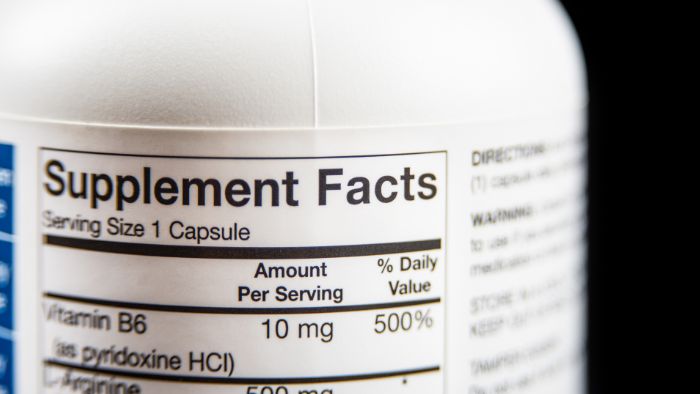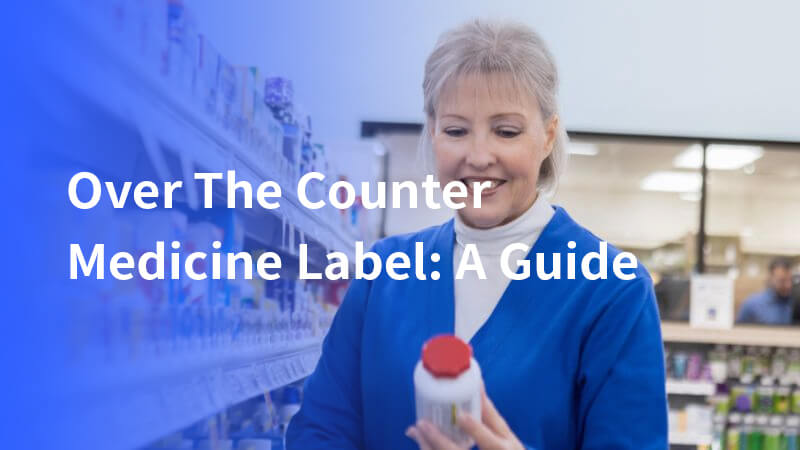Over the counter medicine label is a common medicine label in pharmaceutical companies and today we are going to talk about it in detail:
What is over-the-counter medicine?
Over-the-counter (OTC) medicines, which are often referred to as OTC medicines, are medicines that do not require a doctor’s prescription and can be judged, purchased, and used by consumers on their own.
These medicines have been used for a long time in clinical practice and are characterized by precise efficacy, low toxicity, side effects, and ease of use.
The following are the differences between over-the-counter drugs and prescription drugs:
| Feature | Over-the-Counter (OTC) Drugs | Prescription Drugs |
| Purchase Method | Can be purchased directly at pharmacies or supermarkets | Requires a prescription from a doctor |
| Safety | Relatively safer, but still need to follow the instructions | Stronger efficacy, but may have more side effects, must be used under the guidance of a doctor |
| Scope of Application | Mainly used to treat common ailments such as colds, headaches, and stomach aches | Mainly used to treat serious diseases such as hypertension and diabetes |
| Regulation | Relatively loose regulation, but with corresponding regulations | Stricter regulation, requiring strict approval |
| Label Instructions | The instructions are relatively simple and easy to understand | The instructions are more professional and require a doctor’s explanation |
It is not necessary to go through a doctor’s guidance, but rather to rely on your own judgment in choosing over-the-counter medications, and there are some people who have allergic reactions to some of the ingredients in the medication or have special circumstances such as pregnancy, over-the-counter drug labeling is necessary.
The history of over-the-counter medicine labels
Over-the-counter (OTC) medicine labels have evolved significantly since the early 20th century. Initially, they provided minimal information, often lacking clear dosage instructions or warnings.

With the rise of consumer safety concerns and regulatory changes, particularly in the 1960s and 1970s, OTC labels began to include standardized content, such as active ingredients, usage directions, and potential side effects.
This evolution reflects the growing emphasis on consumer protection and informed decision-making in medicine use. Additionally, these changes were guided by the applicable OTC drug monograph, which set specific regulations and standards for labeling.
What’s on an over-the-counter medicine label?
Over-the-counter (OTC) medicine labels contain critical information that guides consumers in using the product safely and effectively. OTC drug labels include a ‘Drug Facts’ section, which details the active ingredients, dosage, purpose, warnings, and other critical information necessary for safe usage without professional advice. Here’s what you can typically find:
- Active ingredients: The components that make the medicine work, listed with their specific amounts per dosage unit.
- Uses: What medicine is intended to treat, such as headaches, colds, or allergies?
- Warnings: Important safety information, including potential side effects, interactions with other drugs, and when not to use the product. The drug facts section provides comprehensive details to ensure consumer safety.
- Directions: Clear instructions on how much to take, how often, and any specific usage guidelines. The drug facts labeling appears in a standardized format to ensure clarity and compliance with regulatory requirements.
- Other information: Details such as storage instructions and inactive ingredients that might cause allergic reactions. The otc drug facts label contains vital details to help consumers make informed decisions about their medications.
Maybe you can find the following information:
- The expiration date, when applicable: Indicates the date after which the product should not be used, as its effectiveness and safety may no longer be guaranteed. This is crucial for ensuring that you do not consume medicine that has lost its potency.
- Lot or batch number: Provides manufacturer information that helps in identifying the specific batch of the product. This is important for tracking purposes in case of recalls or quality issues, ensuring that any problems can be swiftly addressed.
- Name and address of manufacturer, packer, or distributor: Clearly states who made, packed, or distributed the product, allowing consumers to contact the company if they have any questions or concerns. This transparency fosters trust and accountability.
- Net quantity of contents: Specifies how much of the product is in each package, usually in terms of weight, volume, or dosage units. This helps you know exactly how much product you are purchasing and using and aids in comparing with other products.
- What to do if an overdose occurs: Provides essential steps and contact information, such as calling a poison control center or seeking emergency medical help, to ensure quick and appropriate action in case of accidental overdose.

Key design considerations for over-the-counter medicine labels
Designing an over-the-counter (OTC) medicine label involves more than just listing information. The goal is to create a label that is clear, user-friendly, and accessible to all consumers. Here are some crucial design considerations:
- Clarity and readability: Use simple language, large fonts, and high-contrast colors to ensure the text is easy to read, even for those with impaired vision.
- Logical layout: Organize information in a logical sequence, with the most important details, such as usage instructions and warnings, prominently displayed.
- Use of icons and graphics: Incorporate universally recognized symbols or images to help convey information quickly and effectively, especially for users with limited literacy or language barriers.
- Consistency: Maintain a consistent format across all products in a brand line, so consumers can easily locate and understand the information they need.
- Regulatory compliance: Ensure that the label meets all regulatory requirements, including the correct placement of mandatory information like the active ingredients and dosage instructions. Adhere to other OTC drug regulations unless specifically overruled by pertinent monographs or other regulations.
Choosing the right material for OTC labels
Selecting the appropriate material for over-the-counter (OTC) medicine labels is a critical decision that affects both the durability and functionality of the product.
The label material must withstand various environmental conditions, including moisture, heat, and handling, to ensure that all printed information remains legible throughout the product’s shelf life. Additionally, the material should be compatible with the packaging surface, adhering securely without peeling or fading.
Consideration of factors such as the type of adhesive, the texture of the packaging, and the intended storage conditions will guide the choice, ensuring that the label not only conveys essential information but also enhances the overall consumer experience.

Challenges in labeling OTC medicines
Labeling over-the-counter (OTC) medicines comes with its own set of challenges that can impact both the efficiency of the process and the quality of the final product. Some of the key difficulties include:
- Adhesion issues: Ensuring that labels stick properly to various packaging materials, especially in environments with fluctuating temperatures or moisture levels, can be challenging.
- Accuracy of label placement: Precision is crucial, as misaligned labels can obscure important information or damage the overall appearance of the product, leading to consumer dissatisfaction.
- Regulatory compliance: Staying up-to-date with ever-changing labeling regulations and ensuring that all required information is accurately presented on a limited label space can be a complex task. It is essential that each OTC drug product meets specific guidelines and includes necessary safety features.
- Speed vs. quality: Balancing the need for high-speed labeling with the maintenance of consistent quality can be difficult, particularly in large-scale production settings where efficiency is paramount.
Viallabeller offers first-class pharmaceutical labeling machines for otc drugs, whether in the form of ampoules, vials, pill bottles or boxes, we have the right labeling solution for you.
Conclusion
The over-the-counter medicine label plays a vital role in ensuring consumer safety and proper usage of non-prescription drugs.
From providing essential information on ingredients and usage to addressing challenges in design and material selection, these labels are carefully crafted to meet regulatory standards and enhance the overall user experience.
As the landscape of healthcare continues to evolve, the importance of clear, accurate, and durable OTC labels remains paramount, guiding consumers in making informed decisions about their health.
References
The Over-the-Counter Medicine Label: Take a Look
Vivien Tong, Design and comprehensibility of over-the-counter product labels and leaflets: a narrative review, International Journal of Clinical Pharmacy, Volume 36, pages 865–872, (2014), doi: https://doi.org/10.1007/s11096-014-9975-0







